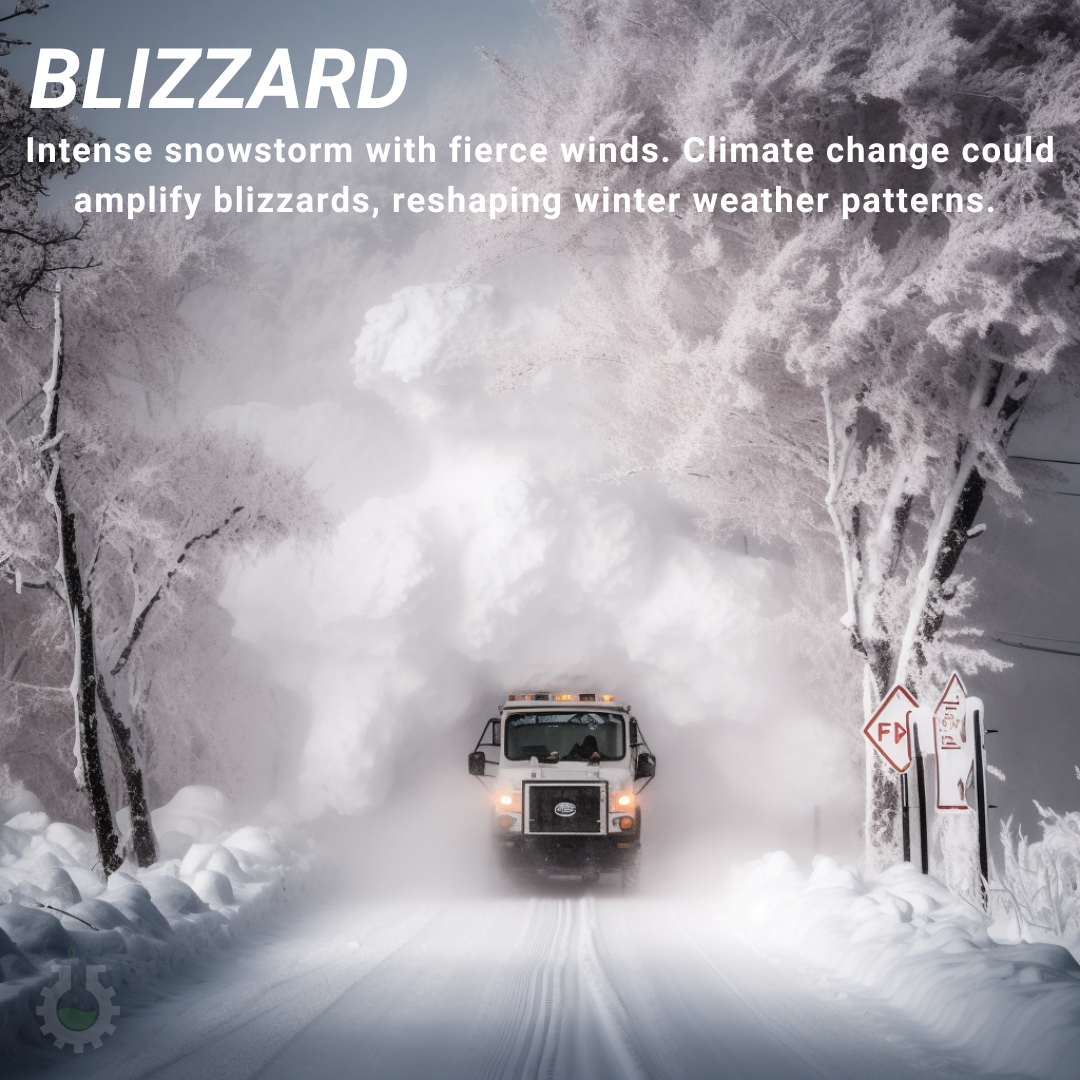August 16, 2023
Climate Change Poster Collection of the Day – Blizzard
Book a Demo
Today’s Climate Change Poster Collection highlights a Blizzard, a term originating from the word “blaze”, symbolizes the rapid whitening of a large area. It refers to a severe snowstorm that lasts for several hours, often coupled with powerful winds of at least 35 mph. The result is a significant disruption to normal life, both for humans and wildlife.
Blizzards are notorious for causing substantial damage to transportation and power transmission infrastructure. Structures with a large surface area to volume ratio, such as traffic signs and antennas, are particularly vulnerable. The relentless winds and heavy snowfall can incapacitate entire regions, making road travel hazardous and often causing widespread power outages.
An interesting phenomenon associated with blizzards is ground blizzards. In these weather conditions, snow isn’t actively falling. Instead, loose snow on the ground is swept up and blown about by strong winds, creating a disorienting and potentially dangerous environment.
The impacts of blizzards can be severe and wide-ranging. For example, The Great Blizzard of 1888 in the United States caused major economic damage and loss of life. People were trapped in their houses for up to a week, unable to venture out due to the harsh weather conditions.
However, modern meteorological advancements like those made by the National Weather Service can predict blizzards and issue warnings. These timely alerts help people prepare for the upcoming storm, potentially saving lives and reducing the overall impact.
Despite their adverse effects, blizzards aren’t entirely negative phenomena. They can have positive impacts, such as replenishing groundwater supplies. The heavy snowfall provides a stable water source for plants and animals during the winter, which is particularly important in regions with limited rainfall.
The most severe blizzards can result in snowdrifts of several meters in height. These towering accumulations of snow make travel and daily activities nearly impossible, especially in high-latitude regions like the Arctic and Antarctic. The inhospitable conditions can last for days or even weeks, truly demonstrating the power and unpredictability of nature.
While blizzards are severe weather events that can cause significant disruption and damage, they are also an integral part of the planet’s weather systems. They serve as a stark reminder of the power of nature, while also providing crucial water resources in some of the world’s coldest regions.
Discover an inspiring collection of climate change posters.



